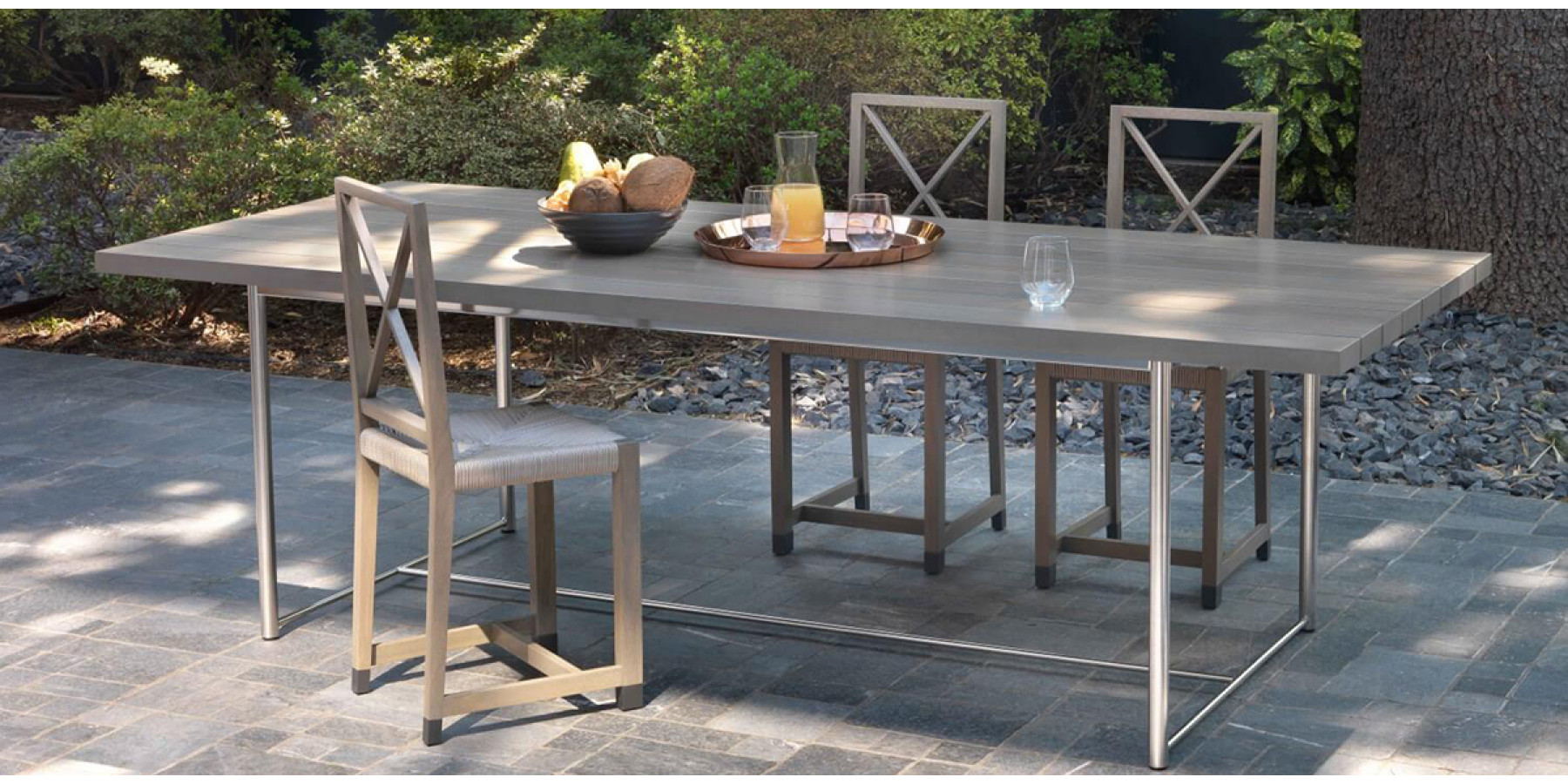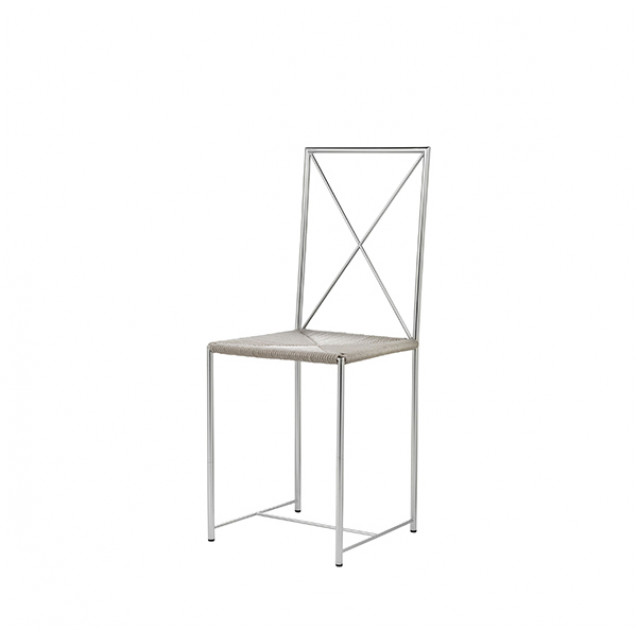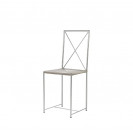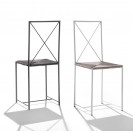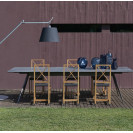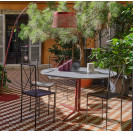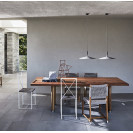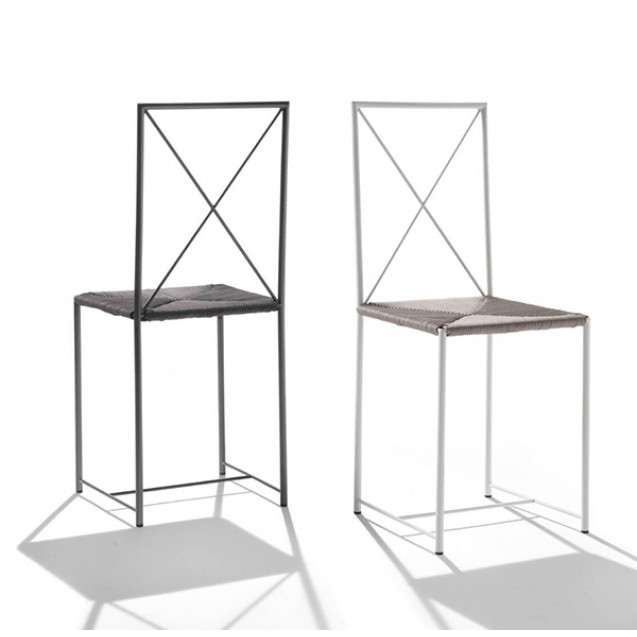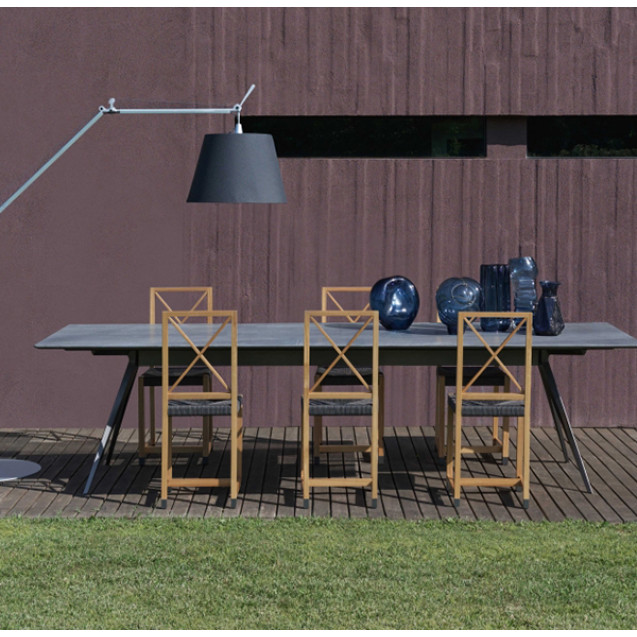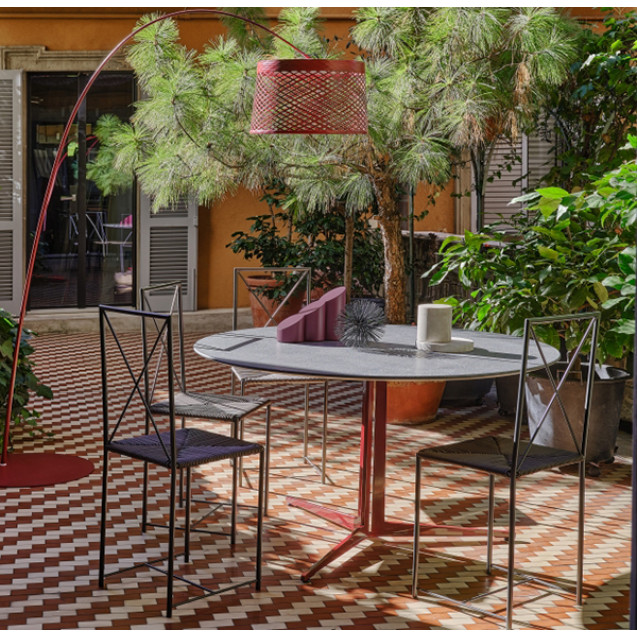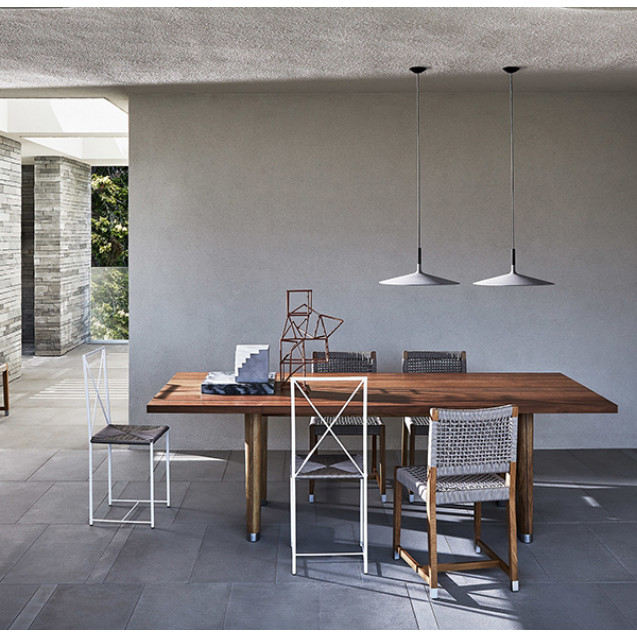Moka
Designed in 1939 by Mario
Asnago and Claudio Vender, the Moka chair has been part of the Flexform
collection since 1985, and now comes back in a totally relevant outdoor
version. The striking modernity of the original design, dense with design
references to the rationalist movement, is now interpreted in innovative
materials chosen for their outstanding weather-resistant qualities. The
slender, sophisticated structure of the Moka Outdoor chair is made of tubular
austenitic stainless steel 316, also available with epoxy powder-coated white,
khaki green, wine red or burnished finish. The backrest features an
elegant X-design while the seat is made of woven polyester fiber or woven
polyurethane rubber in a color palette that ranges from earth tones to bordeaux
and olive green. The Moka Outdoor chair also comes in a version with
structure in solid iroko with natural finish, or lacquered white or stained
grey finish and rests on die-cast metal alloy tips and nylon pads. It is
strongly advised that the respective covers be used to keep the Moka Outdoor
chairs in top condition and prolong their original beauty as much as possible.
| About Designer | |
|---|---|
Mario Asnago & Claudio Vender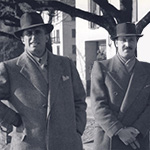 |
Asnago & Vender Designed for Flexform the Moka
chair, the Piano bed and nightstand (1985) Mario Asnago Claudio Vender
Both Mario and Claudio received
Architecture Certification at the Bologna Institute of Fine Arts in 1922. The
first joint projects were for competitions, among which the Como War Memorial.
In 1928, after obtaining the right to practice as architects, together they
opened the Studio Asnago-Vender Architetti. They were mostly involved in town
planning architecture (schools - residence - churches...). Among the objects
designed for interiors were tables and chairs with the characteristic X. The
slender structure represents the architectural philosophy of the two designers:
surfaces are wide but spaced out with empty spaces that point out the discreet
presence of the material, which does not take away lightness, but only part of
the stiff evenness that characterizes their interiors. After Asnago's
retirement in 1971, Vender continued the business with his son Mario and Mario
Moganti. |
